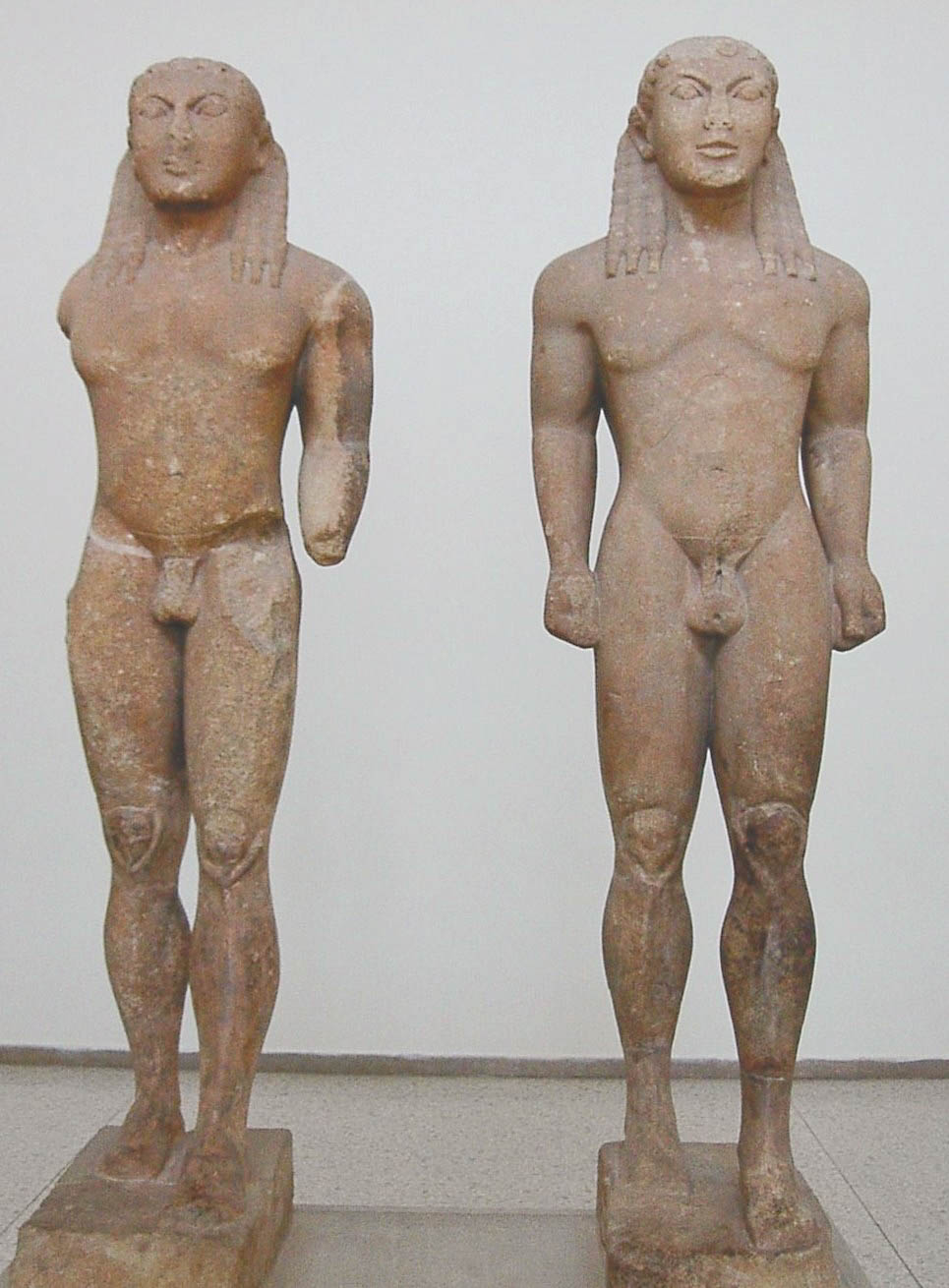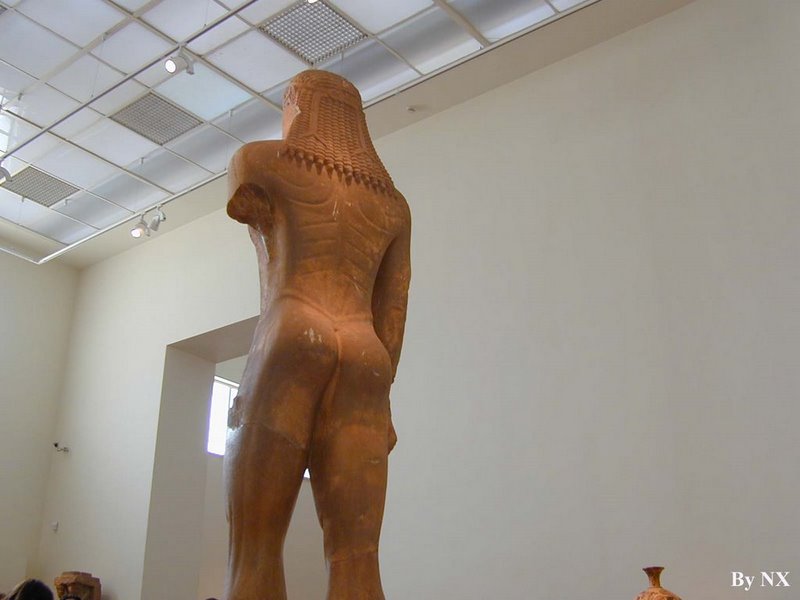The kouros (pl. kouroi) comprises a class of sculptures hailing from the Archaic period, or roughly from 590 to 500 BCE. Many of these pieces served a dedicatory function, as evidenced by the fact that many kouroi have been found left as offerings in sanctuaries. The subjects were mainly nude male figures, indicating movement with one leg striding forward. Their female counterparts (kore, pl. korai) were clothed rather than naked, showing a hesitance toward depicting female nudity during the Archaic period.
Overall, the later kouros figures are markedly more naturalistic than earlier Daedalic style sculpture in which hair was more wig-like and shorter in stature. Although these later figures are more realistic than previous works, with more seen of anatomical features and a freeing of the bodily form from stone, many less realistic features such as rigid shoulders and large almond-shaped eyes are still present. However, sculptural variation and development in kouroi should not simply be analyzed in any linear temporal fashion, as many features fluctuate and differ irrespective of date.
Well-known examples, and notable features therein:
- “Kleobis and Biton”: found at Delphi, 590 BCE

- “Anavyssos Kouros”: funerary monument, muscles now shown, shading on chest, freeing up of form in the back (another similar sculpture used as example), 530 BCE

- “Berlin Kore”: clothed female, arms crossed over body, emotion on face, 570 BCE

- “Peplos Kore”: wears the peplos dress, wavy hair instead of wig-like, arms freed from stone because attached separately, paint remnants, shown wearing earrings, 530 BCE

- “Euthydikos Kore”: arm freed from rigid bodily form (only one arm carved separately), torso on a pedestal, 500 BCE
image source 1: http://upload.wikimedia.org/wikipedia/commons/6/66/Ac.kleobisandbiton.jpg
image source 2: http://www.seshat.ch/home/kouros3a.JPG
image source 3: http://lh3.google.com/_3kxFUOawr4c/RtgcL1WnnfI/AAAAAAAABuw/QrNnQ_wP1L8/s800/Musée+d'Athènes+-+0004++Kouros+d'Anavyssos.jpg
image source 4: http://www.utexas.edu/courses/introtogreece/lect9/hBerlinGoddess9907080115.jpg
image source 5: http://ccwf.cc.utexas.edu/~bruceh/cc307/archaic/images/061.jpg
image source 6: http://www.utexas.edu/courses/introtogreece/lect9/iEuthydikosKore0501290514.jpg

